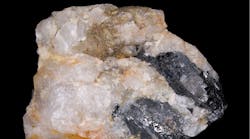Download this article in PDF format.
As organizations worldwide work to develop more sustainable supply chains that adhere to environmental, social and governance (ESG) standards, conflict minerals remain a key challenge for electronics manufacturers and distributors. With their supply chains spread around the world, organizations that lack visibility into all corners of their supplier bases may end up procuring products built with conflict minerals from the Democratic Republic of Congo (DRC).
Conflict minerals are not a new problem, but it is one that’s receiving more attention as customers demand that the companies they buy from operate more ethically, sustainably and responsibly. In this case, the conflict minerals include tin, tantalum, tungsten and gold mined in DRC. These raw materials are used to make all types of electronic products plus goods used by the automotive, aerospace and medical equipment industries.
The Definition Expands
According to EcoVadis, conflict minerals are a source of funding for warlords in the DRC region, where mined conflict minerals may pass through numerous locations in neighboring countries before being shipped to processing facilities. These countries are Sudan, Central Africa Republic, Uganda, Congo Republic, Angola, Tanzania, Rwanda, Burundi, Democratic Republic of Congo, Zambia and Angola.
The DRC is also rich in two more elements—lithium and cobalt—that are used to make electric vehicle (EV) batteries. In fact, the UN Environment Programme (UNEP) says that the DRC is home to about 70% of the world’s cobalt—a distinction that UNEP’s Corey Pattison sees as both a blessing and a curse.
“DRC is one of the most biodiverse areas in the world,” Pattison said. “It is also a country facing many development challenges.” For example, the DRC ranked 179 out of 191 countries and territories worldwide on the 2021 Human Development Index. “Part of the challenge is that the institutional history of the DRC is profoundly shaped by the extraction of resources—which has historically not benefitted local communities,” Pattison continued. “This and other governance challenges have led to insecurity and poverty, which create the conditions for cycles of violence.”
It’s Not Always Easy
This year, procuring tin, tantalum and tungsten that doesn’t support violence in central Africa has become more complicated. Bloomberg says that’s because an industry-led program monitoring the supply chains downgraded its relationship with the region’s main mineral-tracking group.
Here’s what happened: The Responsible Minerals Initiative (RMI), which helps large corporations avoid purchasing metals that fuel or fund violence, is using an auditing process that no longer recognizes the findings of the International Tin Supply Chain Initiative (ITSCI).
The ITSCI was removed from RMI’s list of recognized upstream programs that monitor mineral supply chains because it has not reapplied for recognition by the group, RMI told Bloomberg.
The publication says ITSCI was developed more than a decade ago by tin and tantalum industry groups to stop mining from supporting conflict in the Democratic Republic of Congo by tagging minerals at mines and tracking them through the supply chain. “It has faced criticism regarding reliability, including from anti-corruption group Global Witness,” Bloomberg reports, “which in April said it had spectacularly failed in its original goal of ensuring traceability of ‘conflict-free’ minerals.”
Adhering to Regulations and Requirements
In the U.S., conflict minerals are regulated under the Dodd-Frank Wall Street Reform and Consumer Protection Act. Section 1502 requires publicly traded companies to disclose the use of tin, tantalum and tungsten in their products and the source of those minerals. “The idea is that increased transparency in the use of conflict minerals will encourage companies to find more ethically responsible sourcing options,” SustainableMarkets explains.
Last year, the European Union (EU) enacted its Conflict Minerals Regulation, which requires conflict mineral use to be reported and also requires EU importers to meet responsible sourcing standards from the Organisation for Economic Co-operation and Development (OECD), the publication notes.
While tin, tantalum and tungsten have always been the focus of conflict minerals regulations, recent concern over other minerals has increased the scope of conflict minerals reporting for many companies. “There is growing concern about sourcing cobalt and mica, as these minerals have often been sourced from areas using child labor and/or human trafficking,” SustainableMarkets points out. “While legislation does not yet require cobalt and mica reporting, we may see it required in the future.”









